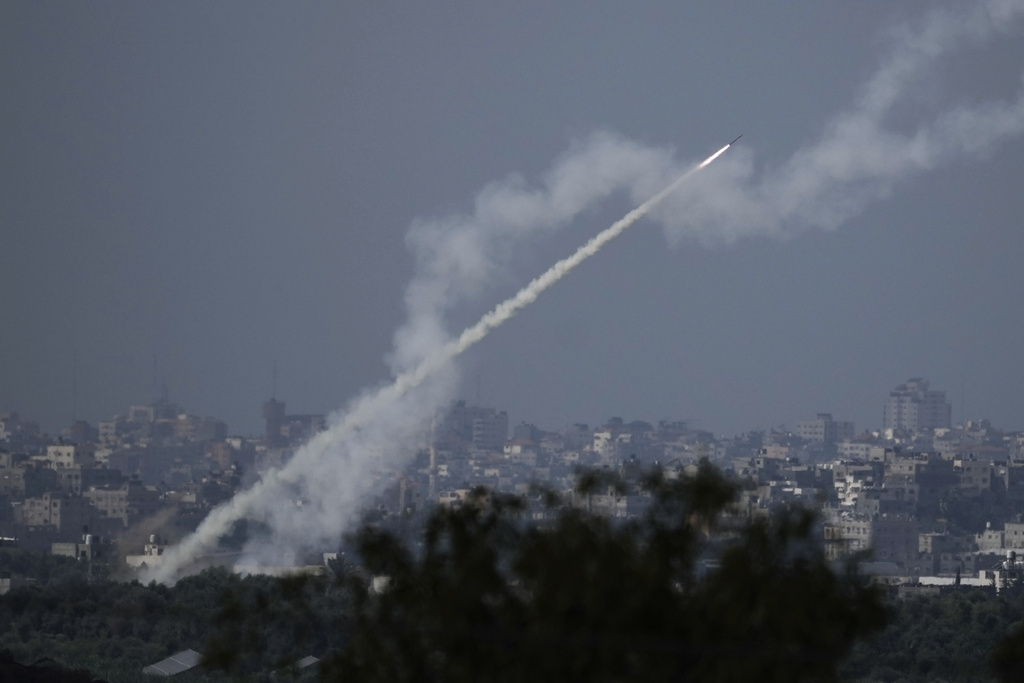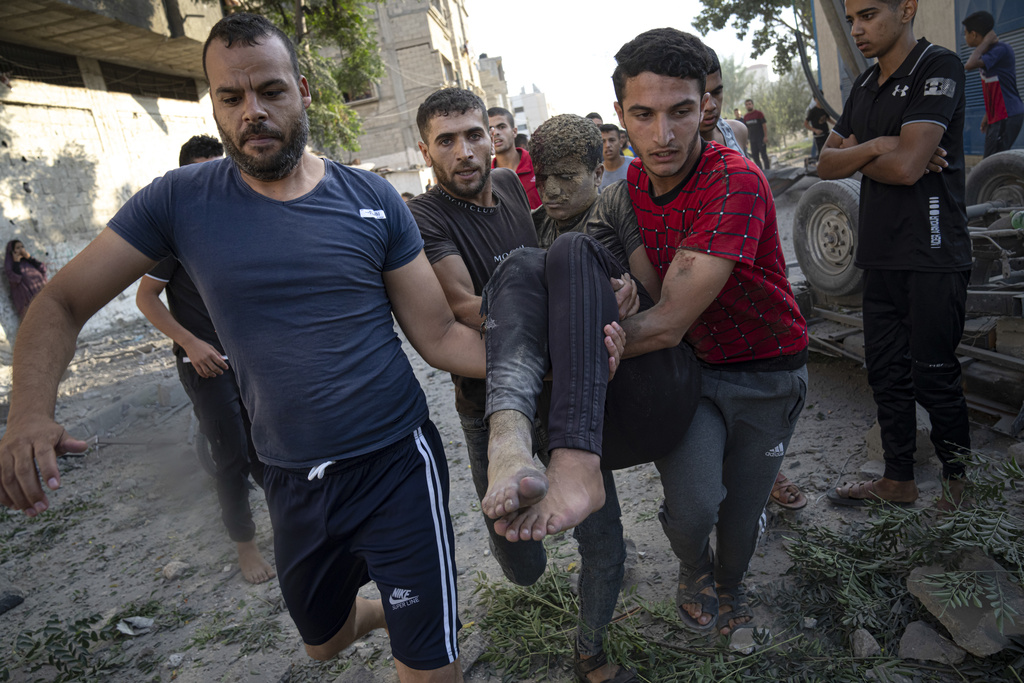All Eyes in Gaza Are on the Crossing Into Egypt, as Efforts To Evacuate the Territory Grow Desperate
In the north, Israel orders residents to leave 28 villages near the Lebanese border, so that the IDF can operate with greater latitude against a potential assault by Hezbollah.

RAFAH, Gaza Strip — All eyes here Monday were on the Rafah crossing between Gaza and Egypt, where trucks carrying badly needed aid have been waiting for days as mediators press for a cease-fire that would allow them enter Gaza and allow foreigners to leave. Rafah, Gaza’s only connection to Egypt, was shut down nearly a week ago.
Hundreds of thousands of Palestinians sheltering in United Nations facilities are on less than a quart of water a day. Hospitals warn they are on the verge of collapse, with emergency generators that power machines like ventilators and incubators down to about one day of fuel and supplies of medicine almost exhausted.
The Hamas-controlled Gaza Health Ministry claims that 2,750 Palestinians have been killed and 9,700 wounded since Israel began its counterattack, more than in the 2014 Gaza war, which lasted over six weeks. More than 1,400 Israelis have died, the vast majority civilians killed in the assault that Hamas began on October 7.
The Israeli military said Monday that at least 199 hostages were taken back in Gaza, higher than previous estimates. The military did not specify whether that number includes foreigners.
Israeli airstrikes come as Palestinian Arab terrorists continue to fire rockets into Israel. The Jewish state is widely expected to launch a ground offensive in order to kill Hamas leaders, recover captives and destroy the group’s military infrastructure, much of which is in residential areas, reflecting Hamas’ strategy of hiding among civilians.

Israel has ordered more than 1 million Palestinians — almost half the territory’s population — to leave Gaza City and the surrounding area for the enclave’s south. The military says it is trying to evacuate civilians ahead of a major campaign against Hamas in the north, where it says the enemy has extensive networks of tunnels and rocket launchers.
Hamas, in line with its policy of using civilians as shields, has urged people to stay in their homes, and the Israeli military on Sunday released photos it said showed a Hamas roadblock preventing traffic from moving south.
For a third day, Israel’s military announced a safe corridor for people to move from north to south between the hours of 8 a.m. and noon. It said more than 600,000 people have already evacuated the Gaza City area. The UN health agency said life-saving assistance for 300,000 patients is currently awaiting entry through Rafah.
More than 1 million people — about half of Gaza’s population — have left their homes in a little over a week. Some headed to the south, while tens of thousands are still sheltering in hospitals and UN facilities in the north, the global body says.
Meanwhile, the Israeli military has ordered residents to evacuate 28 communities near the Lebanese border after increasing cross-border fire between Israel and the Lebanese militant group Hezbollah. The military order affects towns that are within 1.2 miles from the border.
Rear Admiral Daniel Hagari, a military spokesman, said the evacuation would allow Israeli forces to operate with greater latitude. “Israel is ready to operate on two fronts, and even more,” he said. “If Hezbollah makes the mistake of testing us, the response will be deadly.”
Hezbollah terrorists fired rockets and an anti-tank missile on Sunday, and Israel responded with airstrikes and shelling. The fighting killed one person on the Israeli side and wounded several on both sides of the border.

At the northern Israeli port city of Haifa, the American government began evacuating some 2,500 of its citizens by ship to Cyprus. Commercial airlines have largely stopped flying into Israel’s Ben-Gurion International Airport, making it difficult to get out of the country.
Secretary Blinken returned to Israel for a second time in less than a week after a six-country tour through Arab nations aimed at preventing the fighting from igniting a broader conflict. President Biden is also considering a trip to Israel, though no plans have been finalized.
In a television interview Sunday night, Mr. Biden, who has repeatedly proclaimed support for Israel, said he thought it would be a “big mistake” for the country to reoccupy Gaza. Israel’s ambassador to the UN, Gilad Erdan, told CNN the country does not want to occupy Gaza but will do “whatever is needed” to obliterate Hamas’ capabilities.
Israeli forces, supported by a growing deployment of American warships in the region and the call-up of some 360,000 reservists, have positioned themselves along Gaza’s border and drilled for what Israel said would be a broad campaign to dismantle the militant group. Israel said it has already struck dozens of military targets, including command centers and rocket launchers, and also killed Hamas commanders.
